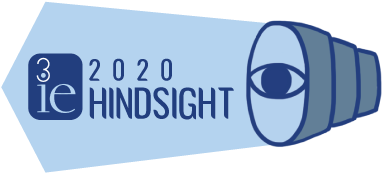In many interventions to improve health outcomes, community health workers (CHWs) play a pivotal role. We've recently written about two such types of interventions: efforts to improve sanitation practices and campaigns to increase vaccination rates. That said, not all programs employing CHWs are equally effective. Evidence from the 1980s and a handful of recent studies show a lack of results from large-scale interventions involving CHWs. So, what can be done to make CHWs more effective?
Four strategies seem to improve CHW performance under at least some conditions: 1) emphasizing career advancement opportunities in CHW recruitment; 2) escalating reminders about overdue tasks from CHWs' supervisors; 3) well-tailored incentives for CHWs who only perform a single task, and 4) mobile phone-based apps to help with procedural guidance.
At the moment, the ongoing pandemic would make it inappropriate for CHWs to perform many of their regular functions. However, health needs will last long after the current crisis is over. And in a blog post in the coming weeks, we'll be looking at whether any community-based strategies might still be feasible with social distancing restrictions, possibly via technology.
This evidence on improving CHW performance comes from a systematic review, which combines the results from numerous studies around the world. This approach provides stronger evidence than relying on a single case, where program outcomes can be affected by location-specific issues.
This particular review includes 14 studies from countries in Africa, Latin America, and South Asia. The specific tasks performed by CHWs varied from one study to another, and included immunisation drives, basic primary care, tuberculosis detection, HIV care, and maternal care. One of the studies was funded and overseen by 3ie.
This review uses a strict definition of community health workers: they must 1) live in the community they serve, 2) work outside of regular health facilities, 3) belong to a formal health system (run by the government or an NGO), and 4) not have a professional or tertiary degree in a medical field. By this definition, the evidence here excludes some related types of interventions involving health volunteers, or workers who are not members of the communities they are serving.
The review identified the four strategies mentioned above, but cautions that they may not all work everywhere. One contextual factor affects all four of the strategies: the resources and managerial capacity of the implementing organisation. Each of the four strategies requires a degree of capacity and resources to be maintained over the duration of the program.
The first strategy, emphasising career advancement opportunities for CHWs, depends on the degree to which CHWs can actually advance in a particular context. For example, this strategy was effective in Zambia, where CHWs are part of the civil service and are thus eligible for government-sponsored training programs. In other contexts, this strategy might not be viable.
The second strategy of escalating reminders for CHWs about overdue tasks requires that a system to track CHW performance already exist, which is not the case everywhere.
The third strategy, providing incentives, was only shown to be effective where CHWs performed a single, repetitive task. There were actually unintended negative effects of incentives in a context where CHWs had multiple tasks but were only incentivised for some of these. For example, incentives had unintended consequences where CHWs were responsible for both identifying new cases of tuberculosis and keeping TB patients on their treatment regimens, but where incentives were only based on the identification of new cases. These incentives did lead CHWs to identify more new cases — but it also led to an increase in the number of patients under those CHWs who fell off their treatment regimen.
It is possible that a better-designed incentive system could work for CHWs with more complex sets of tasks. However, the studies identified in this review did not include any interventions which provided a mix and weighting of invectives aligned with the multiple tasks that needed to be performed. This is hence an area that invites further improvements in program design and accompanying evaluations.
The fourth strategy, procedural guidance by mobile phone, has obvious caveats: it only works where mobile phone service is good, people have phone credit, and electricity is available to charge phones.
For more information about this review, the full study and our assessment of its quality is here. Beyond this study, hundreds of other systematic reviews and thousands of impact evaluations are available in our newly-updated Development Evidence Portal.
 This blog is part of our campaign 2020 Hindsight: What works in Development. Learn more about the campaign and read past blogs here.
This blog is part of our campaign 2020 Hindsight: What works in Development. Learn more about the campaign and read past blogs here.
You probably also relied on the study by JPAL with Operation ASHA. The latter used all the four strategies at the time the study was done. Now, it has gone beyond and uses additional strategies like eCounselling: https://www.opasha.org/blog/2017/12/30/e-counseling/. This further improves the performance of CHWs. We will be happy to share results of this strategy.